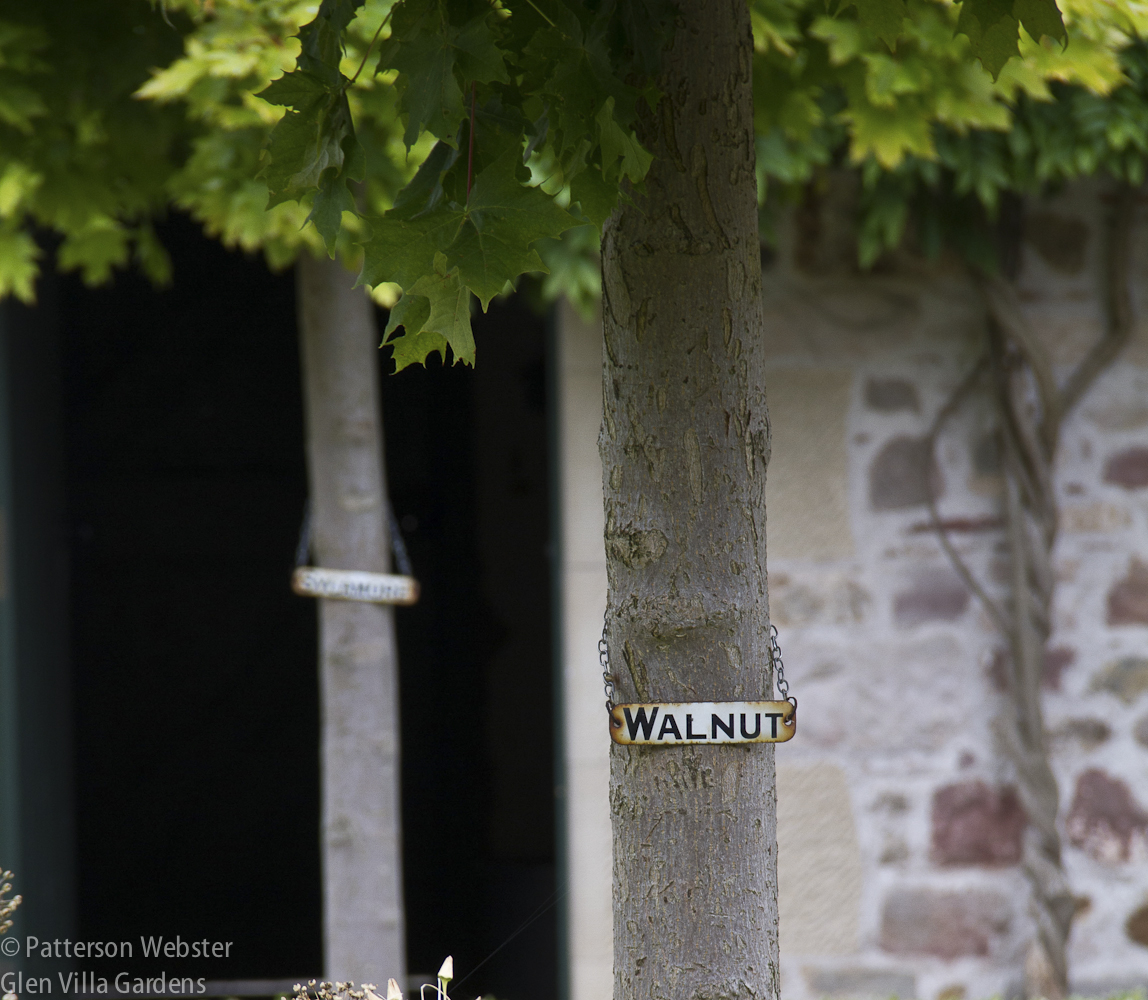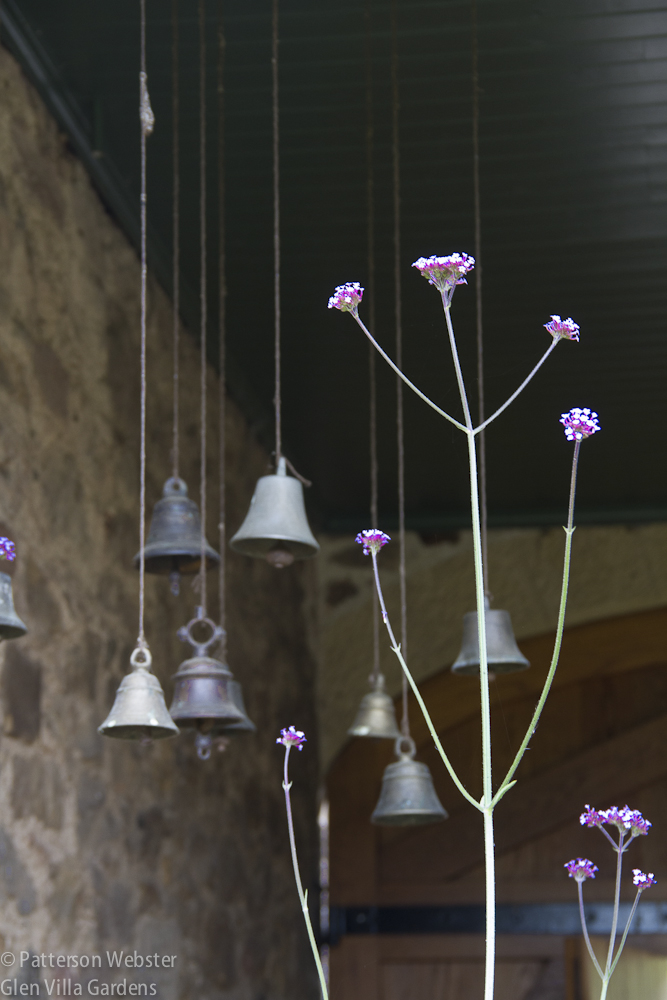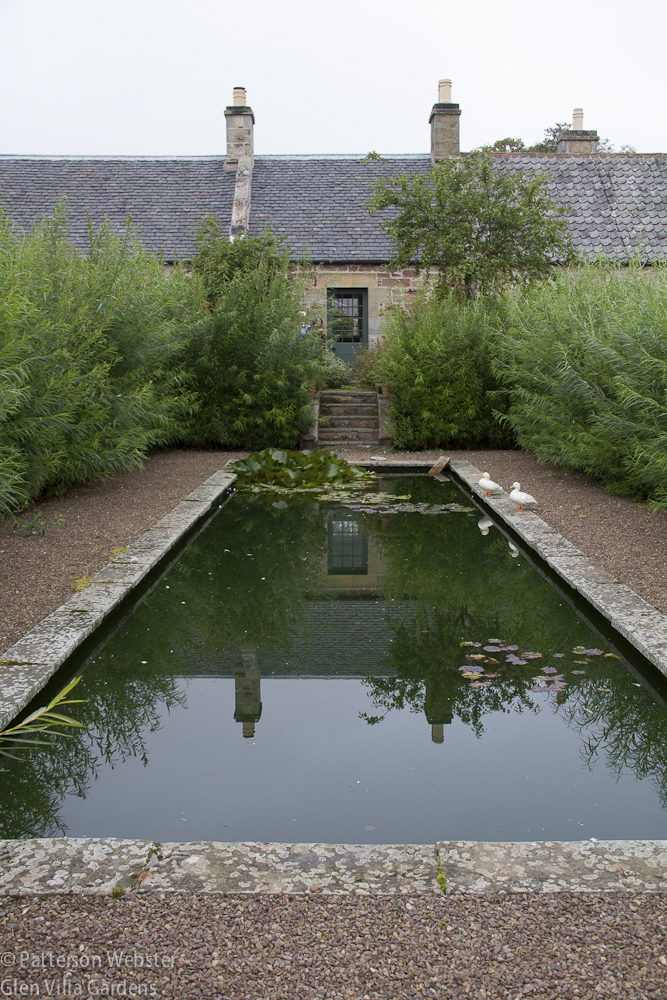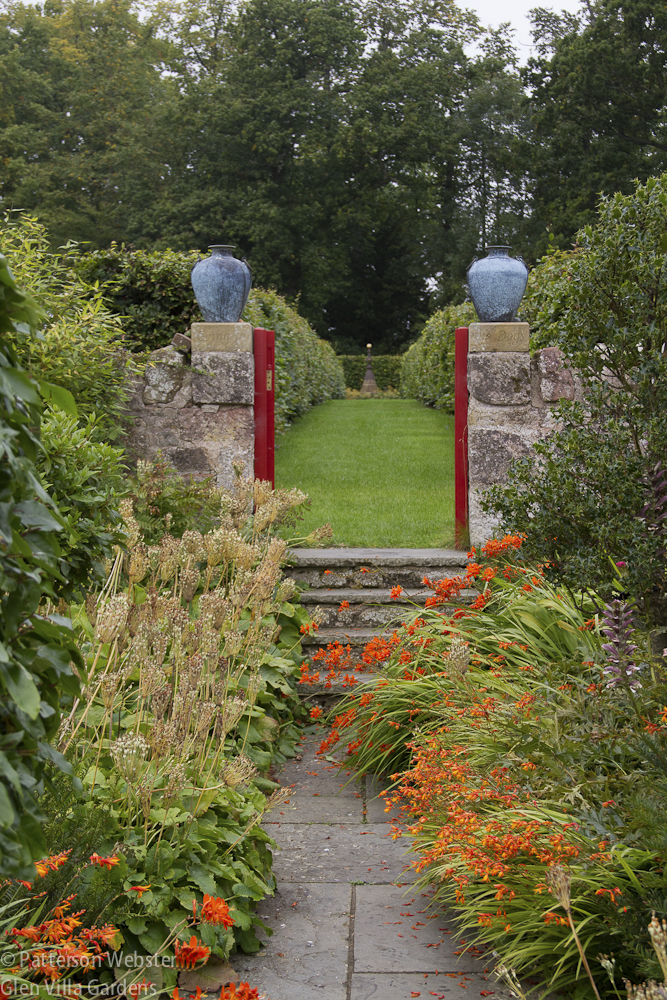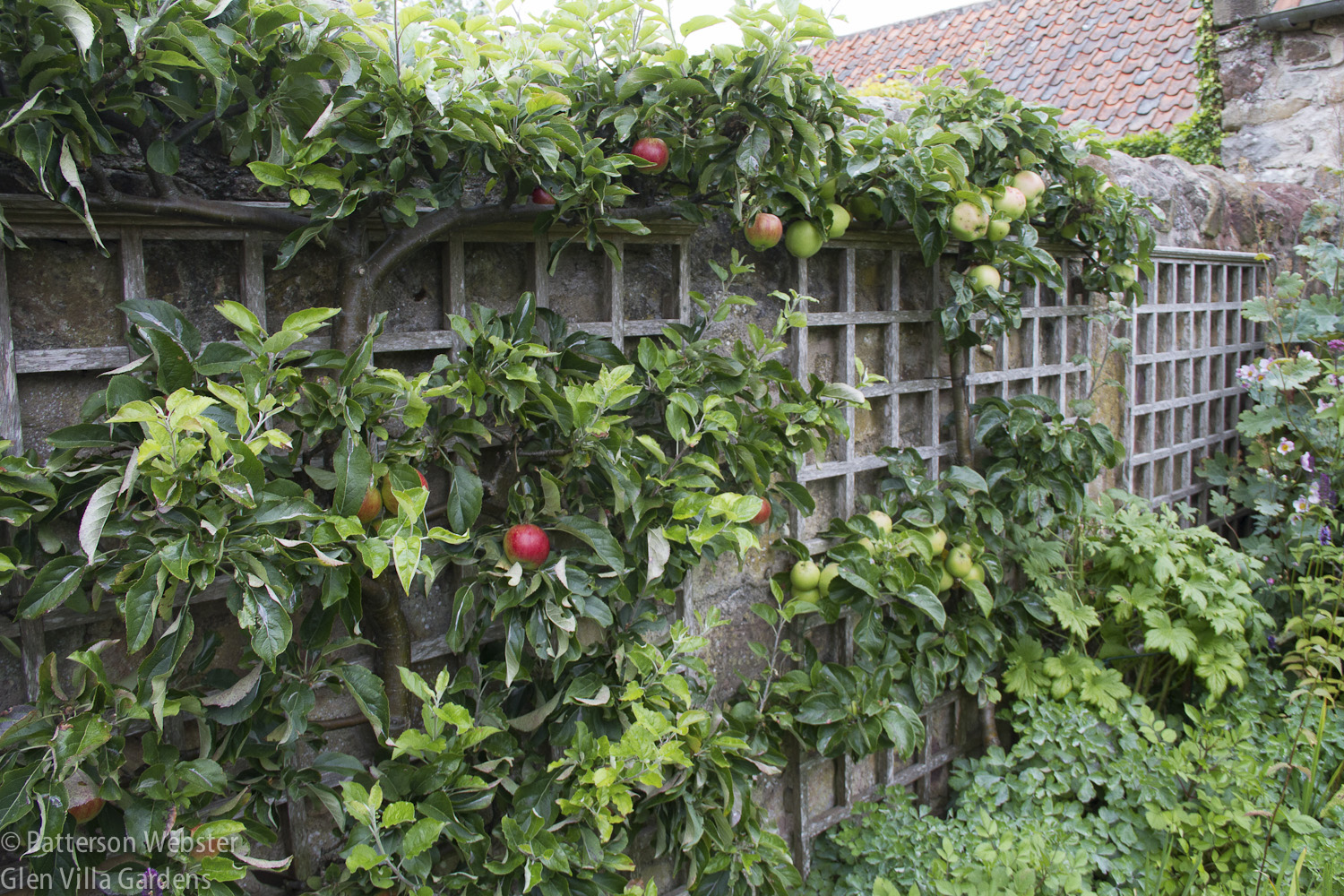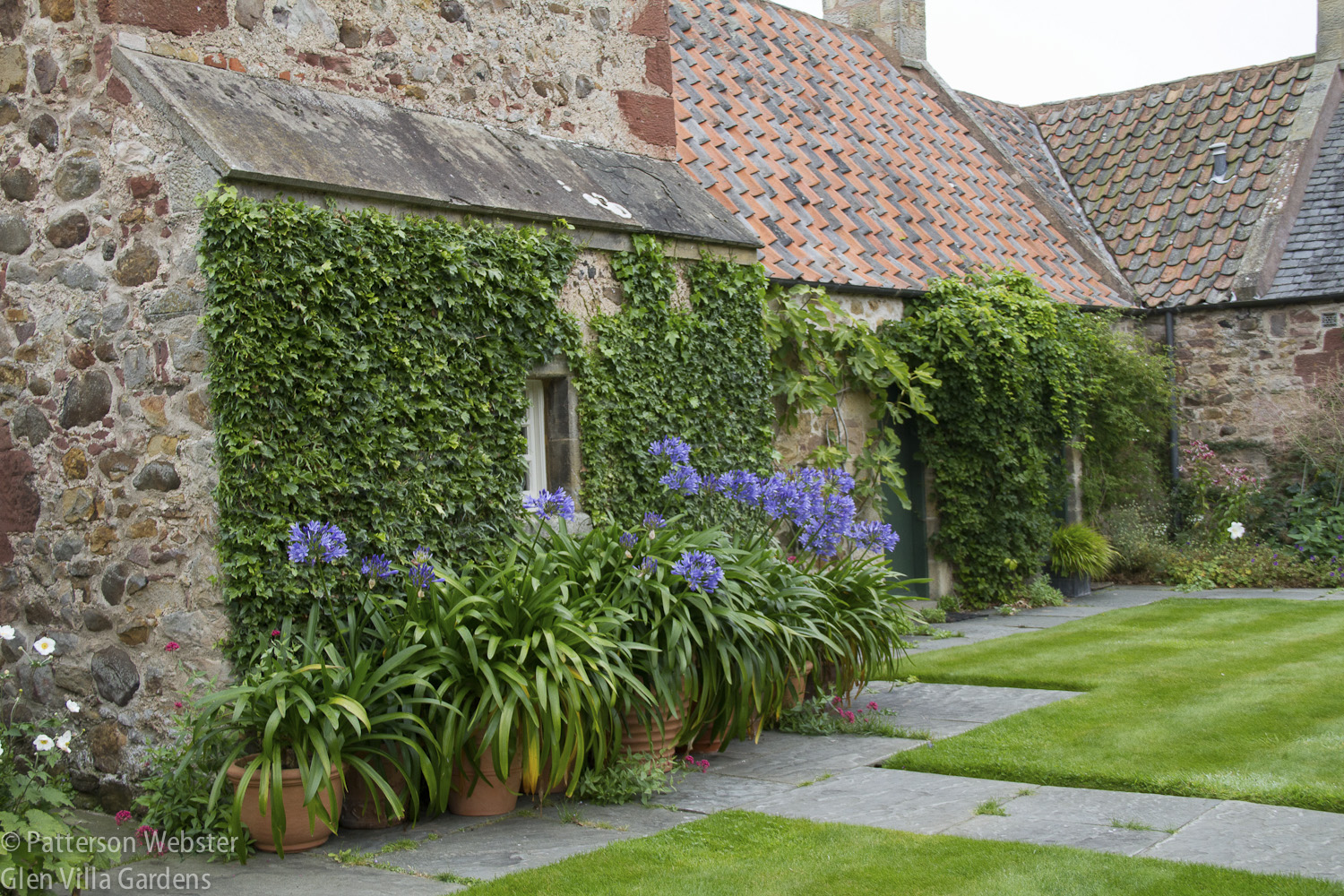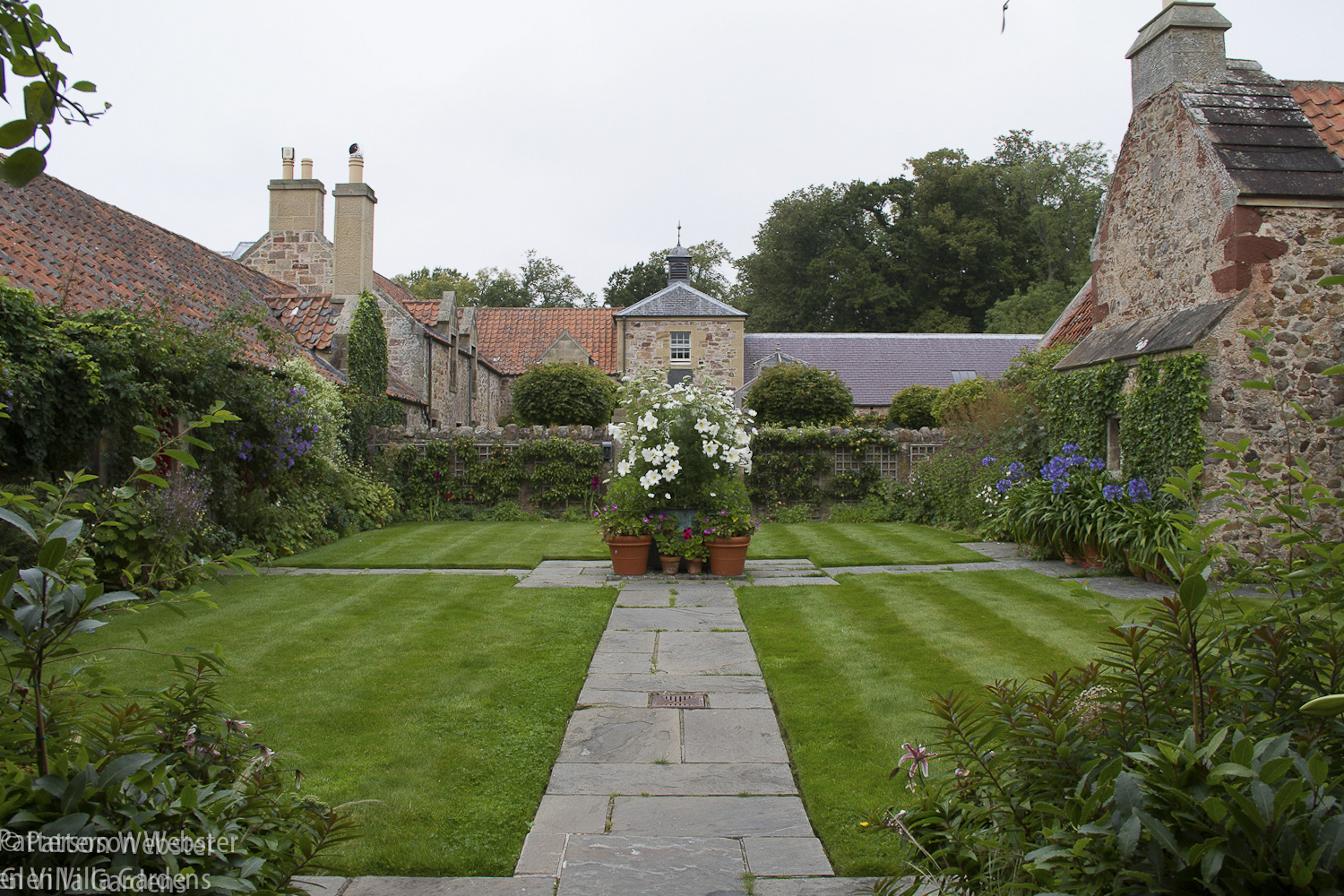Broadwoodside is the garden of Robert and Anna Dalrymple. Located some 20 miles east of Edinburgh in Gifford, East Lothian, Broadwoodside is a garden of subtle humour and artful plantings.
When the Dalrymples bought the property in the late 1990s, it was nothing but a collection of derelict farm buildings. Since then, under their direction, gardener Guy Donaldson has planted a series of gardens nestled within walled courtyards and in areas outside the walls.

Would I have had the courage to renovate this property? I seriously doubt it. Photo courtesy of Broadwoodside’s website.
Guy is responsible also for maintaining this elegant and inventive garden, and his work is impressive.
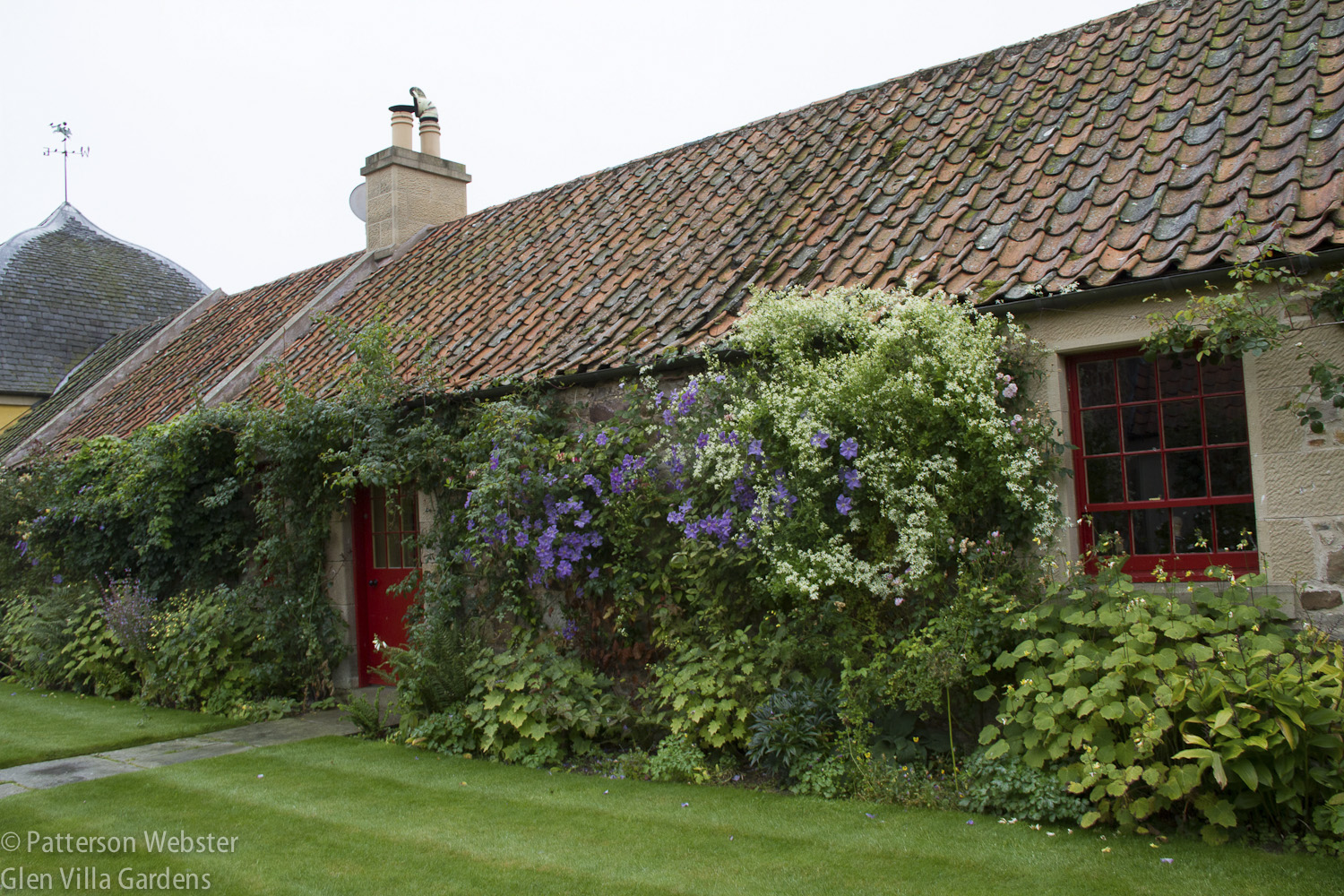
The ‘before’ of this building is visible in the photo above. Architect Nicholas Groves-Raines renovated the old buildings and added an ogee-roofed corner tower and an arched gatehouse to enclose the courtyards.
He and owner Anna Dalrymple were on site to answer questions when the group I was hosting toured the garden in September. We visited on a grey day that kept breaking its promise to brighten. No matter. Before entering the first of the courtyards, I knew we were going to see a special place. Perched on top of one of several stone walls was a ball, striped in black and white. It wasn’t extraordinary in itself, but it did cause me to peek over the wall and into the apple orchard beyond. Here I saw the first of many features that gave the garden its special flair.
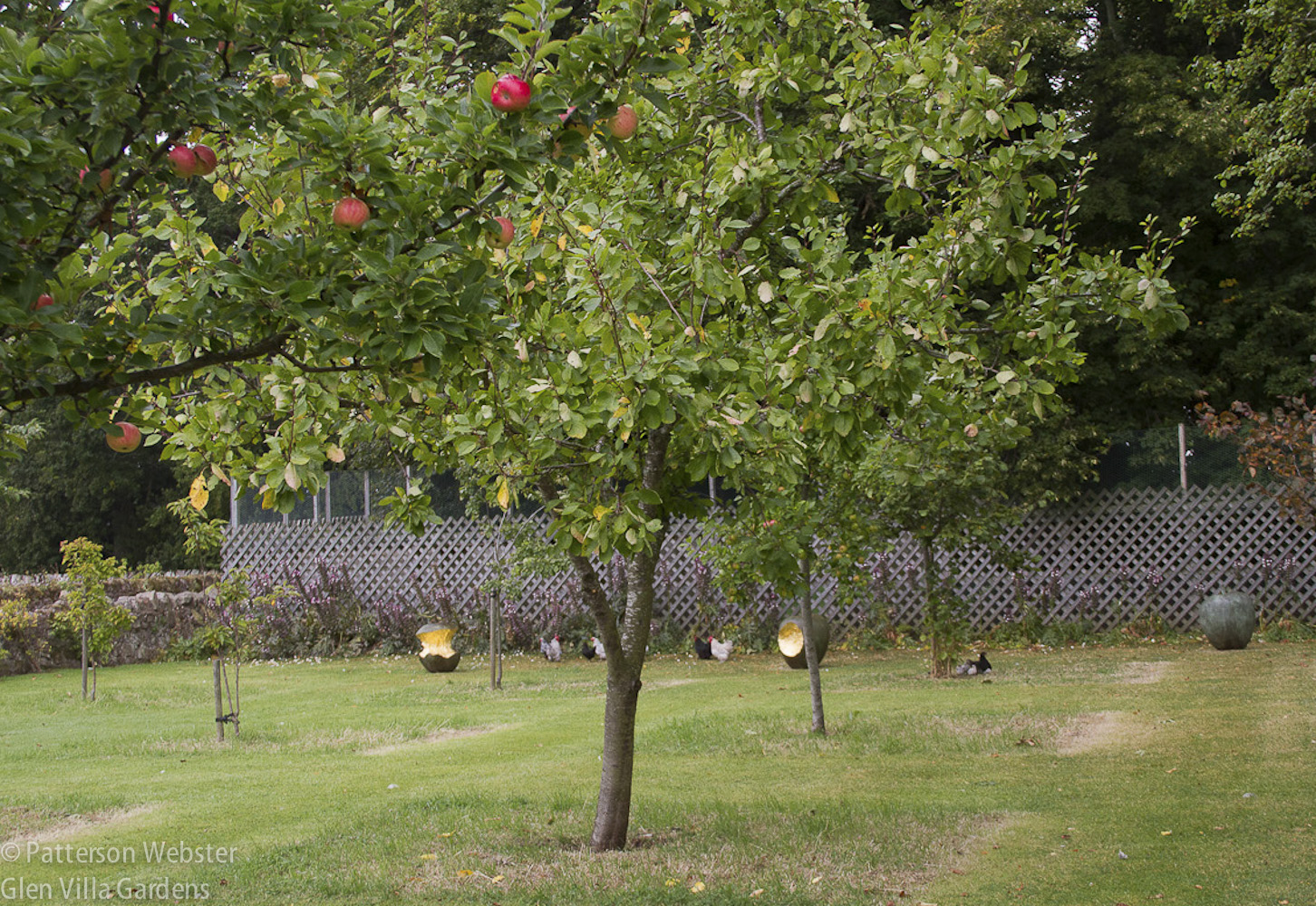
Three apples show the progression from the whole fruit to one that has been well enjoyed. The inside of each apple is painted gold — a subtle classical allusion perhaps?
Inside the first courtyard, a checkerboard alternated cobbled and planted squares. Dominating the centre was a stylish bird cage that housed the Dalrymple’s parrot.
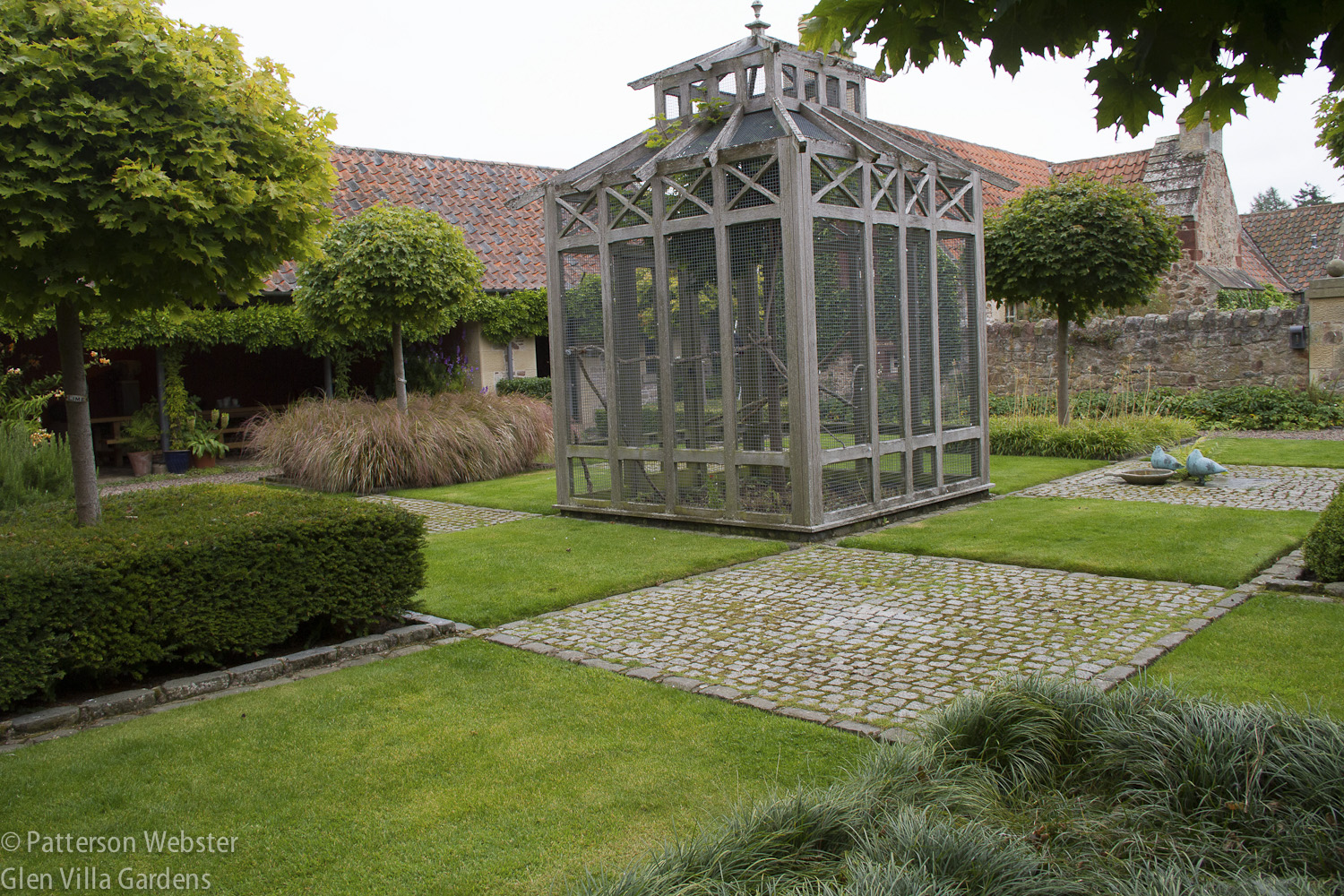
The view on entering the Upper Courtyard gives a hint of the inventiveness that appears throughout the garden.
Centred in eight of the squares were maple trees (Acer platanoides) trimmed to lollipops. Each tree was underplanted with something different, with square-trimmed boxwood or boxwood balls, ornamental grasses, pachysandra or rosemary. As I mentioned last week in my post about doing the unexpected, a label hung from each of the maple trees, misidentifying the trees as walnuts, limes, willows and other impossibilities.
This playful touch continues throughout the garden, both in its plantings and its art. Under the entry gateway, skinny bell-like annuals reach upwards towards the mirrored shape of bells hanging down.
On a beautifully maintained lawn, ship’s windows lie flat on the ground, mirroring the sky and suggesting an entry point to a watery underworld.
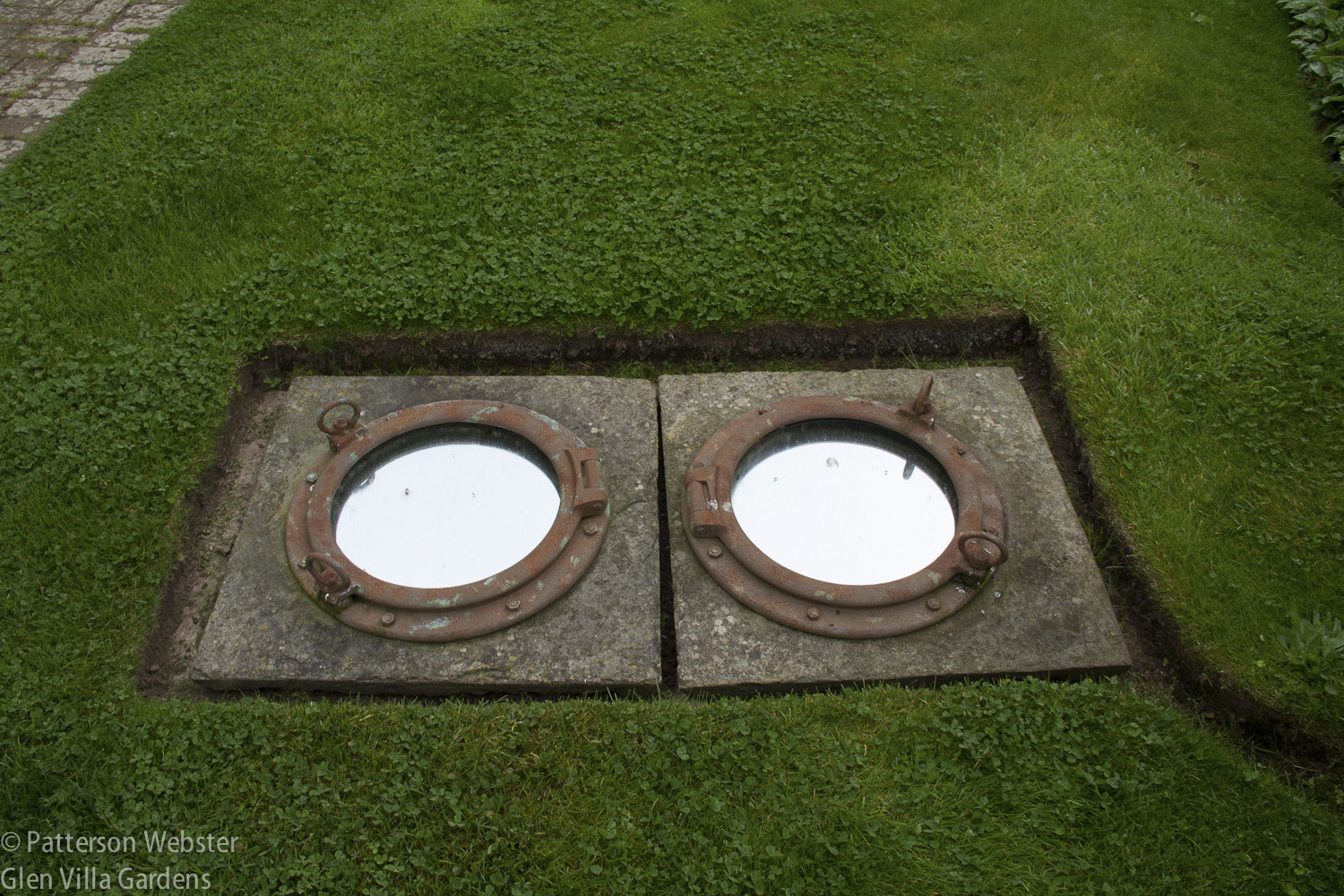
Imagine a circle of blue sky reflected on the green grass. Or imagine opening one of the portholes and looking down into the underworld. Both mental pictures work for me.
The straight-line arrangement of buildings at Broadwoodside dictates the shape of the enclosed garden areas, and the long rectangular pattern has been embraced as a defining design feature. A path through the Upper and Lower Courtyards leads to a kitchen and cutting garden where a rectangular pool continues the line.
An avenue of hornbeams on one side of the house, skillfully planted to make the distance appear longer than it is, is mirrored by the straight lines of white fireweed on the other.
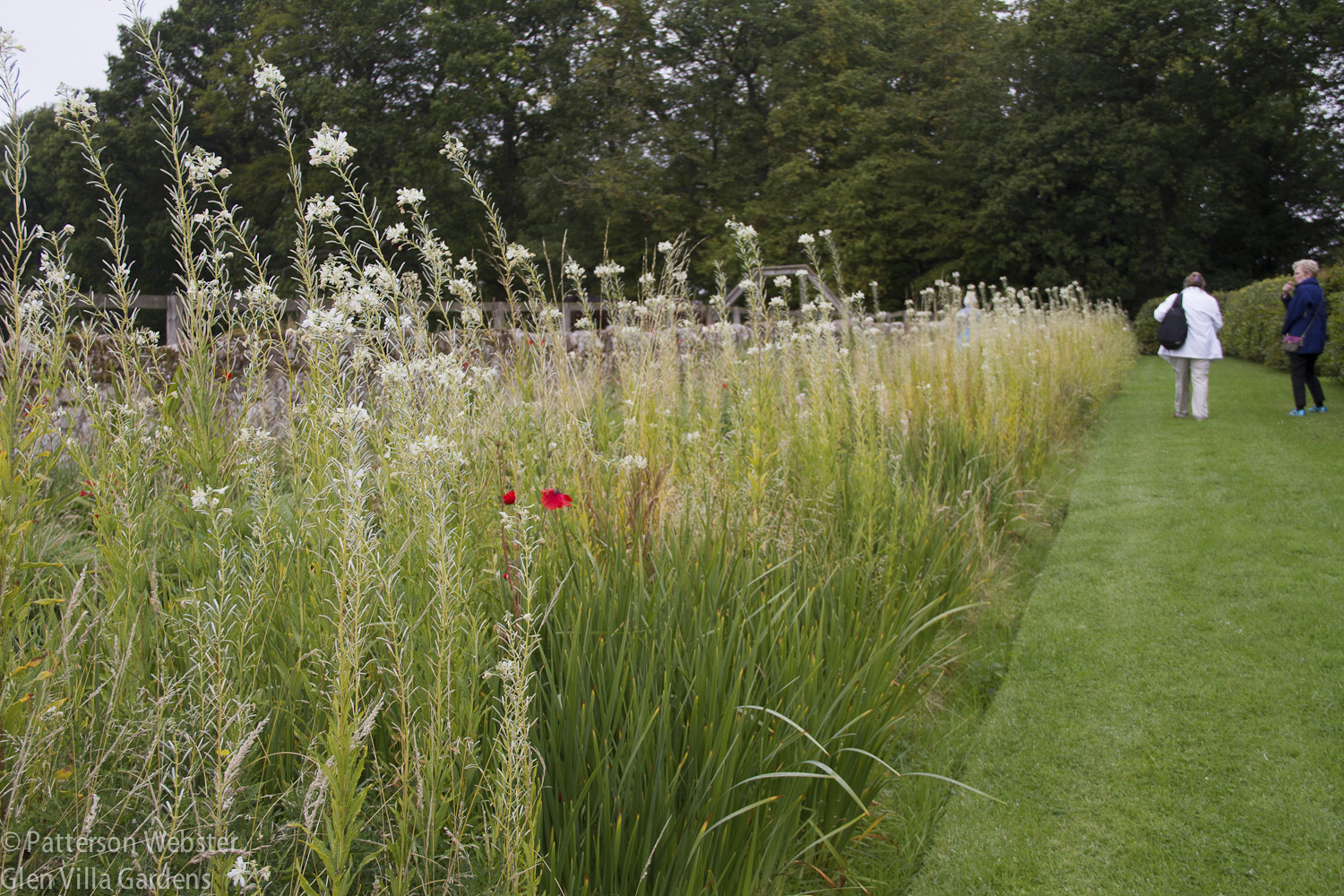
What North Americans call fireweed is called rosebay willow herb in England. Complicating the nomenclature, the plant’s botanical name has changed from Epilobium angustifolium to Chamerion angustifolium. Whatever you call it, although still enjoyable to see, the flower was past its peak when we visited.
A stretch of grass seen through a vase-topped gateway leads the eye down yet another garden path.
Although Broadwoodside’s design is strongly linear, nothing about the garden itself is straight. Or at least, not straightforward. That’s where the humour comes in. On the wall where Anna Dalrymple served us coffee and banana bread (so delicious that the garden was referred to afterwards by members of our group as the Banana Bread Garden), the writing was on the wall. Literally.
Across the courtyard, more writing appeared on the wall, but this time it was all Greek to me.
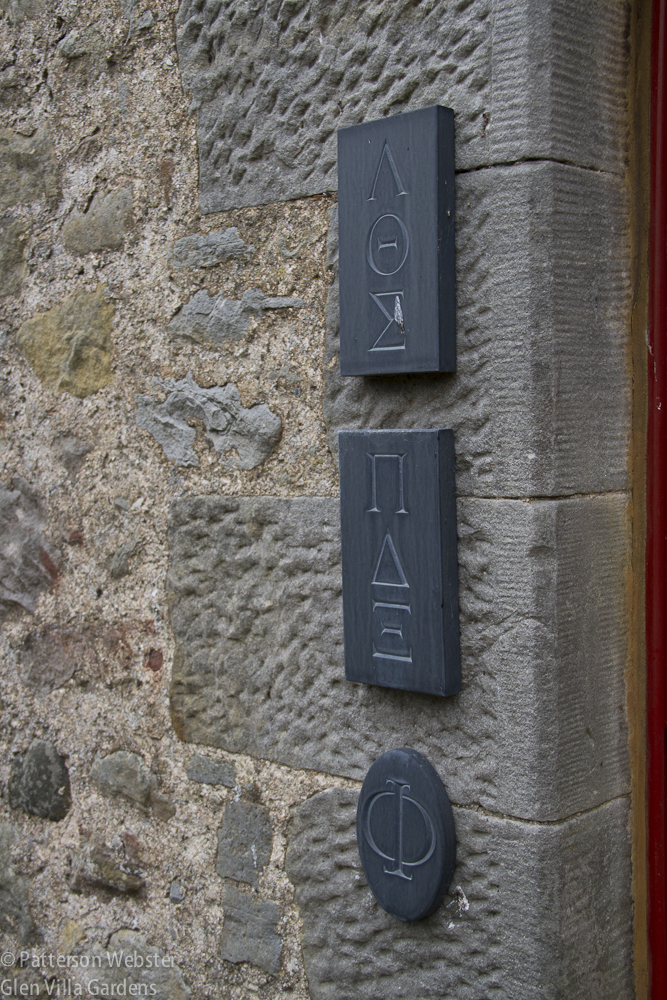
I know what each letter stands for but have no idea if they mean anything when put together. Anna Dalrymple said they were nonsensical, and maybe they are. I do wonder, though, whether they are there in order to prompt the clichéd phrase used above. Can anyone enlighten me?
Plantings were equally inventive. In the Lower Courtyard, espaliered apples and pears hugged one wall
while agapanthus in pots hugged another.
In the centre of the courtyard, a mass of Madonna lilies scented the whole.
And the colours! I loved this planting of smoke bush (possibly Cotinus coggygria ‘Royal Purple’ ) and Euphorbia (I don’t know the variety name) particularly combined with the blue posts and the red window frames.
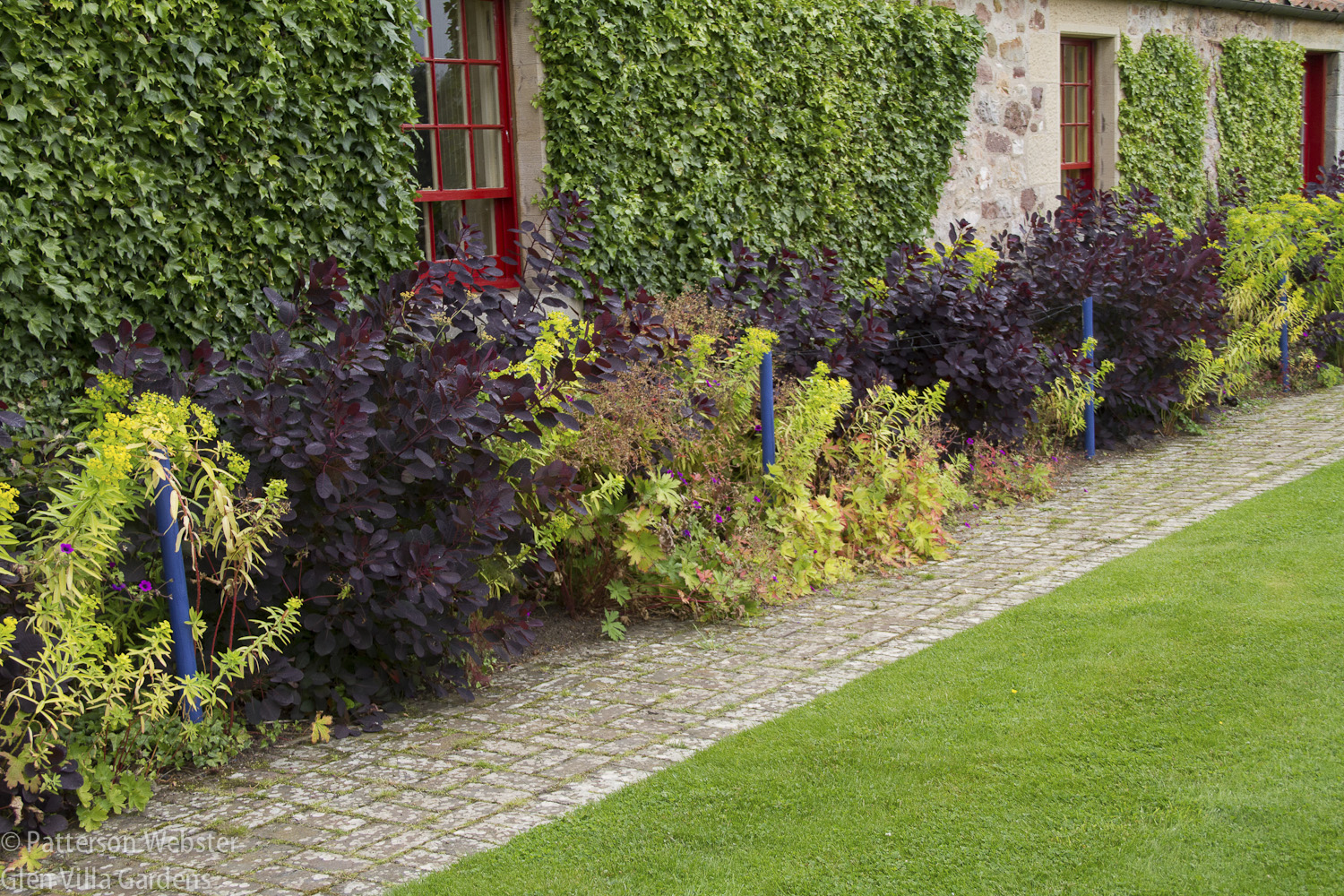
The blue posts hold a wire grid that keeps all the foliage upright. The smokebush is probably pruned annually to keep it at that height.
Formal geometric lines can make a garden predictable, but that’s not the case at Broadwoodside. In this garden nothing can be taken at face value. A stone plinth, just the right height to sit on, held a mock-Latin inscription that made me scratch my head. (Only as I was writing this piece did I figure it out.)
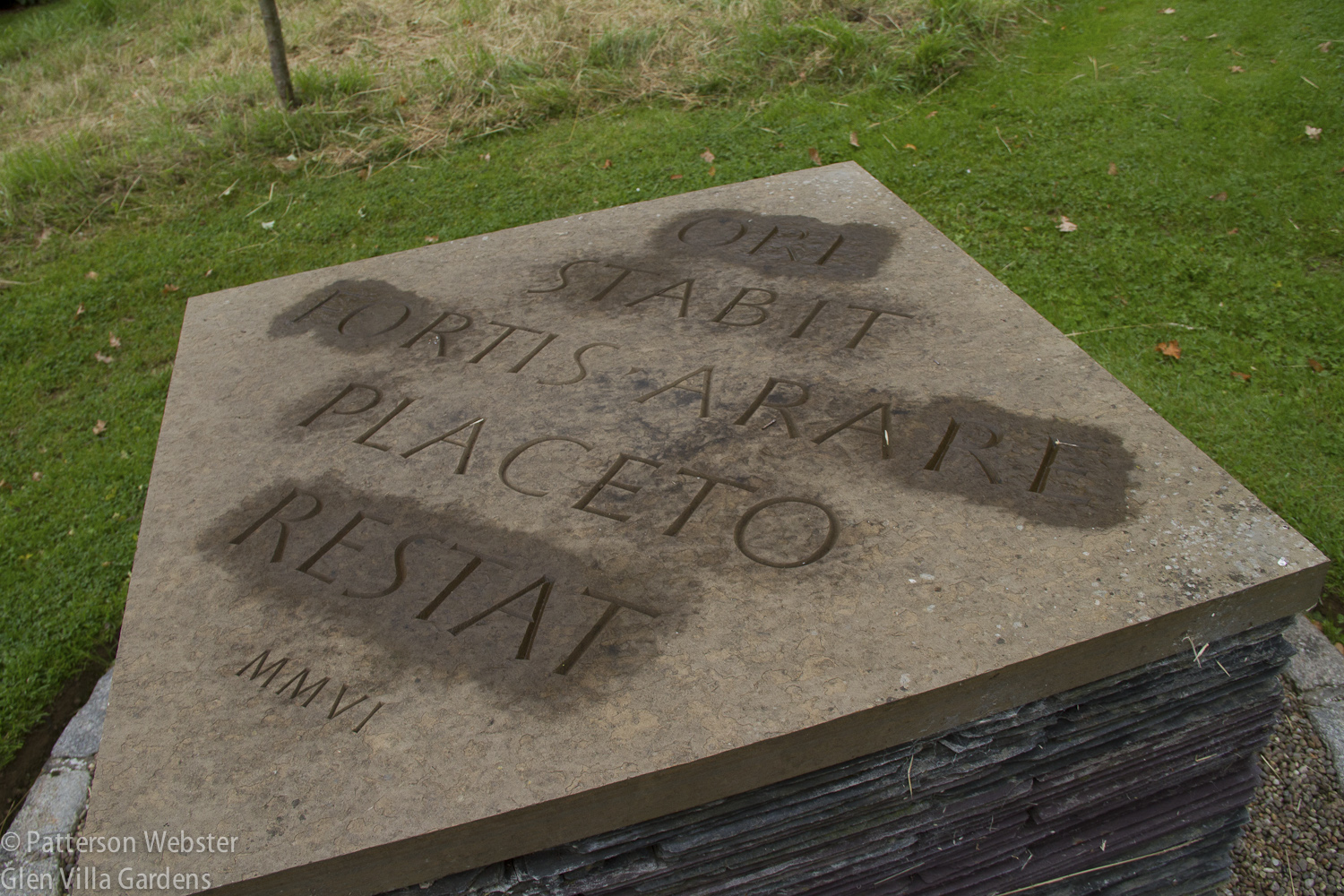
Remove the spaces between the words to decipher the Dalrymple’s attitude towards their resting place. The date 2006 is when renovations were completed.
Classical references abound, but they aren’t treated too seriously.
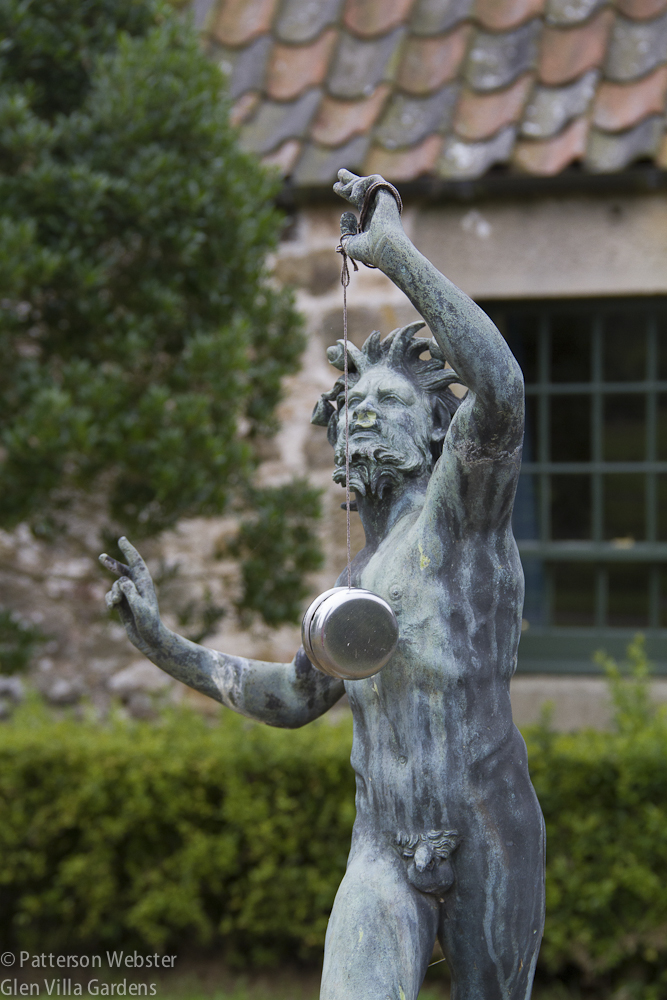
Is this horned god Pan or some other deity? Is he a generic Greek style nude? A crazy Michelangelo-inspired David with yoyo instead of rock? Or is someone simply having a bit of fun? The yoyo and string appear to be later additions.
Kenneth Cox, writing last year in Scotland for Gardeners called Broadwoodside “one of Scotland’s finest contemporary private gardens…” This year, Garden Design Journal described it as a garden that “employs all the classical devices of symmetry, perspective and precise alignment … in such a witty fashion that the familiar becomes fresh and exciting.”
I agree. This is a garden to admire and to inspire. A garden worth returning to.


